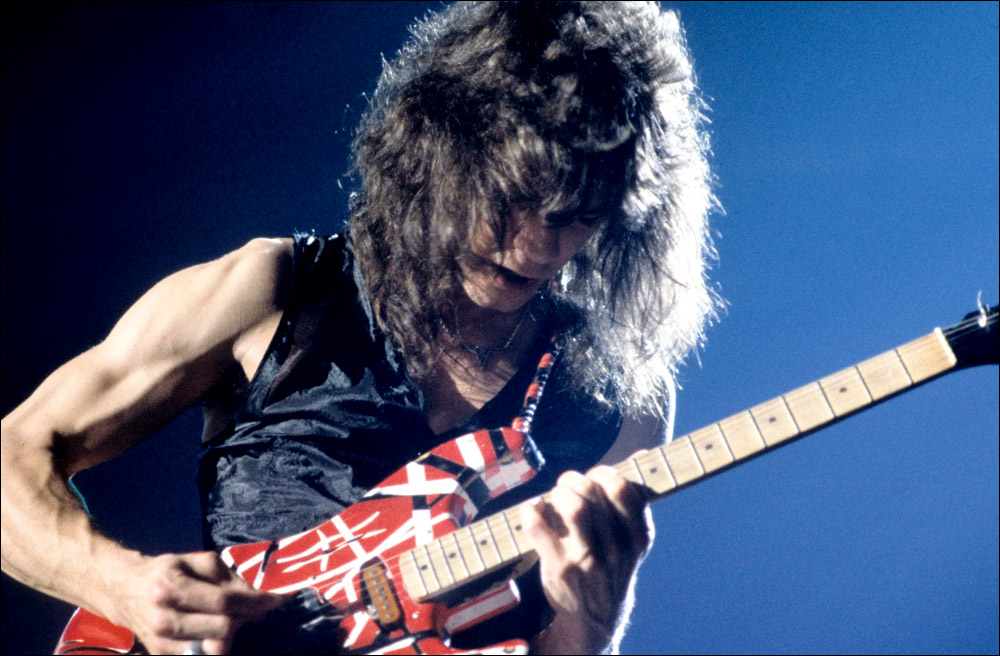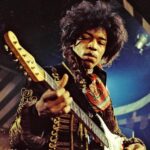Now Reading: Eddie Van Halen: The Guitar Legend Who Changed Rock Forever
-
01
Eddie Van Halen: The Guitar Legend Who Changed Rock Forever
Eddie Van Halen: The Guitar Legend Who Changed Rock Forever

Article written by Jax Whitmore
Eddie Van Halen, born Edward Lodewijk Van Halen on January 26, 1955, in Amsterdam, Netherlands, was one of the most influential guitarists in rock history. Moving to Pasadena, California, as a child, Eddie grew up in a musical family—his father, a jazz musician, inspired him and his brother Alex to pursue music. Eddie initially studied piano but quickly gravitated toward the electric guitar, inspired by the explosive sound of 1960s rock bands like The Beatles, Cream, and Led Zeppelin.
In 1972, Eddie and Alex formed the band Mammoth, which became Van Halen when David Lee Roth joined as lead singer. The band quickly dominated the Los Angeles rock scene with their energetic performances and innovative sound. Eddie’s guitar technique, particularly his two-handed tapping, allowed him to play rapid arpeggios across the fretboard, revolutionizing rock guitar and influencing countless musicians worldwide.
Van Halen’s debut album, Van Halen (1978), set a new standard for hard rock, followed by the iconic 1984, which featured the worldwide hit “Jump.” Over four decades, Van Halen sold over 100 million records globally, produced 13 number-one hits on Billboard’s Mainstream Rock chart, and earned induction into the Rock and Roll Hall of Fame in 2007.
Eddie’s versatility extended beyond Van Halen, most famously when he created the legendary guitar solo for Michael Jackson’s “Beat It.” Originally improvising for free as a favor to producer Quincy Jones—whom he initially thought was playing a prank—Eddie quickly reworked parts of the song to create better harmonic space, then recorded two blazing solos in under an hour. He even adjusted minor chord changes, all without receiving payment. This iconic solo demonstrated his genius for combining technical mastery with creative intuition, bridging rock and pop in a way few musicians ever have.
The Frankenstrat: A Guitar Revolution
Eddie Van Halen was not just a guitarist but an inventor, and his most famous creation was the “Frankenstrat.” He built this hybrid guitar by combining parts from Fender and Gibson instruments, beginning with a factory-second Fender Stratocaster body and neck. He added a high-output Gibson humbucking pickup to achieve the powerful sound he wanted, contrasting with the single-coil tone of a standard Strat.
Van Halen engineered multiple technical modifications to create his signature tone and functionality:
- Electronics Simplification: He removed two tone pots and wired the pickups to a single volume circuit, resulting in a minimalist and intuitive control layout.
- Hardware Modifications: He installed a 1961 Fender tremolo and adjusted it with a quarter-inch shim to sit flush on the body.
- Wax Potting: To prevent feedback, he dipped the humbucking pickup in paraffin wax, a technique that became widely adopted in guitar building.
- Pick Storage: He attached picks to the guitar body with tape to keep them handy during live performances.
- Paint Design: The guitar’s iconic black-and-white striped finish was created using masking tape over a black-painted body before applying a white coat. Later, he experimented with red-and-white designs.
The Frankenstrat embodies the concept of “cross-pollination,” merging the best features of different guitar designs into a new category known as the “Super Strat.” Its innovative construction inspired countless imitators and influenced the development of high-performance electric guitars for decades.
Eddie developed the “brown sound,” a tone known for its warmth, sustain, and clarity, and held three patents related to guitar innovation, including a flip-out support for flat playing and a tension-adjusting tailpiece. He collaborated with brands like Kramer, Peavey, and Fender to create the EVH guitar line, amps, and accessories that continue to influence players today.
Beyond Van Halen, Eddie collaborated with a wide range of artists, including Sammy Hagar, Brian May, LL Cool J, Roger Waters, and Steve Lukather. He also contributed to soundtracks, including Twister (1996) and The Wild Life (1984), showcasing his adaptability across genres.
Despite chronic health challenges—including hip issues, tongue cancer, and throat cancer—Eddie performed and inspired fans until his passing on October 6, 2020, in Santa Monica, California. His son, Wolfgang Van Halen, continues the musical legacy, though he emphasized, “You can’t have Van Halen without Eddie Van Halen.”
Eddie Van Halen’s influence on rock music and guitar is immeasurable. He was more than a guitarist—he was an inventor, a visionary, and an artist who transformed the possibilities of the electric guitar, leaving a permanent mark on music history.



























